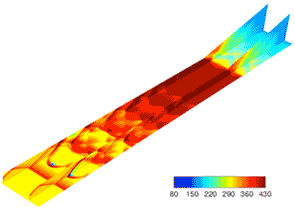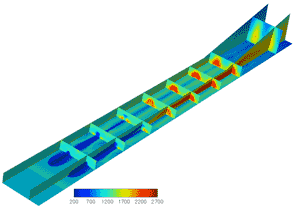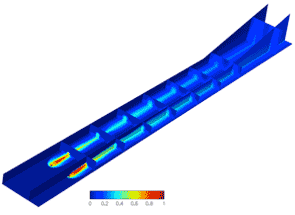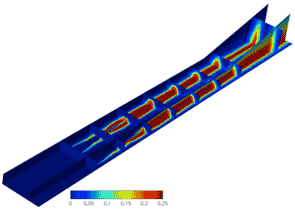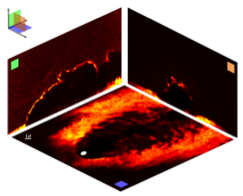 Since we are interested in predictive simulations of the unstart phenomenon caused by thermal choking, the heat release model is central to our overall objectives. The heat release modeling group is focusing on the development of heat release models for supersonic combustion to be used in both low and high fidelity simulations. We are also interested in identifying and characterizing all uncertainties associated with the combustion process. The group effort relies on a close interaction between experimental and numerical work. In particular, two in-house experiments directly support the modeling effort, i.e., a mixing and combustion of a jet in supersonic cross-flow experiment and shock tube experiments to characterize the different reaction rates and their uncertainties. Since we are interested in predictive simulations of the unstart phenomenon caused by thermal choking, the heat release model is central to our overall objectives. The heat release modeling group is focusing on the development of heat release models for supersonic combustion to be used in both low and high fidelity simulations. We are also interested in identifying and characterizing all uncertainties associated with the combustion process. The group effort relies on a close interaction between experimental and numerical work. In particular, two in-house experiments directly support the modeling effort, i.e., a mixing and combustion of a jet in supersonic cross-flow experiment and shock tube experiments to characterize the different reaction rates and their uncertainties. |
| |
| |
| Objectives |
Our specific goals are:
- Develop low fidelity combustion model for full system simulations (RANS)
- Develop high fidelity combustion model for both low and high fidelity simulations (RANS/LES)
- Validate models with support of experimental work
- Identify and characterize uncertainties in combustion
|
| |
| |
| Approach |
Our approach relies on a close collaboration between experimental and numerical studies. This means not only that experimental measurements are used for code validation, but also that numerical results provide information on how to shape the experiments. Concretely, this means:
- Experimental configurations and conditions are well characterized; in particular, uncertainties are quantified and prioritized.
- Numerical validations provide flexible parameter study, insight in quantities not easily measured, recommendations on improvements of the experiments.
|
| |
| |
| Experimental studies |
| H2/O2 kinetics |
| The goal of this work is to develop a refined and improved H2/O2 kinetics mechanism with a solid understanding of the source and levels of uncertainty in the proposed reaction rates, and their impact on the predictive capability of the resulting combustion model.
[more...] |
| |
| Reactive jet in supersonic cross-flow |
| The investigation of mixing, ignition and reaction zone structure in transverse hydrogen jets in supersonic crossflows is primarily designed to improve our physical understanding and as a validation test case for the supersonic mixing and combustion models for both RANS and LES solvers.
[more...] |
| |
| |
| Modeling |
| The modeling of the mixing and heat release within the combustor is performed at different fidelity levels: |
| |
| 1D heat release model |
| While the 1D heat release model used in RANS simulations is rather crude, it captures some of the key physical aspects involved in supersonic combustion. Its low computational cost allows a large number of simulations to be performed, which is a requirement for complex UQ studies. This model focuses on the heat release itself and does not include any details of the combustion. [pdf] |
| |
| Mix and burn model |
| This model is based on infinitely fast irreversible chemistry. In other words, the combustion of hydrogen is instantaneous and complete as soon as fuel and oxidizer mix. This represent an upper bound on the heat release, assuming the correct prediction of the mixing. |
| |
| FPVA-based combustion model |
| A more accurate combustion model is also being developed for both low and high fidelity simulations. This model is based on tabulated chemistry similar to the Flamelet/Progress Variable Approach (FPVA). It allows the use of complex chemistry, which can involve a large number of species. Because more physics is included in the model, the model-form uncertainties are thus decreased. This is however at the expense of computational cost. [pdf] |
| |
| |
| Results |
| Jet in supersonic cross-flow |
| Simulation of a hydrogen jet in a supersonic cross-flow are performed with both LES and RANS and are compared with experimental data. |
| |
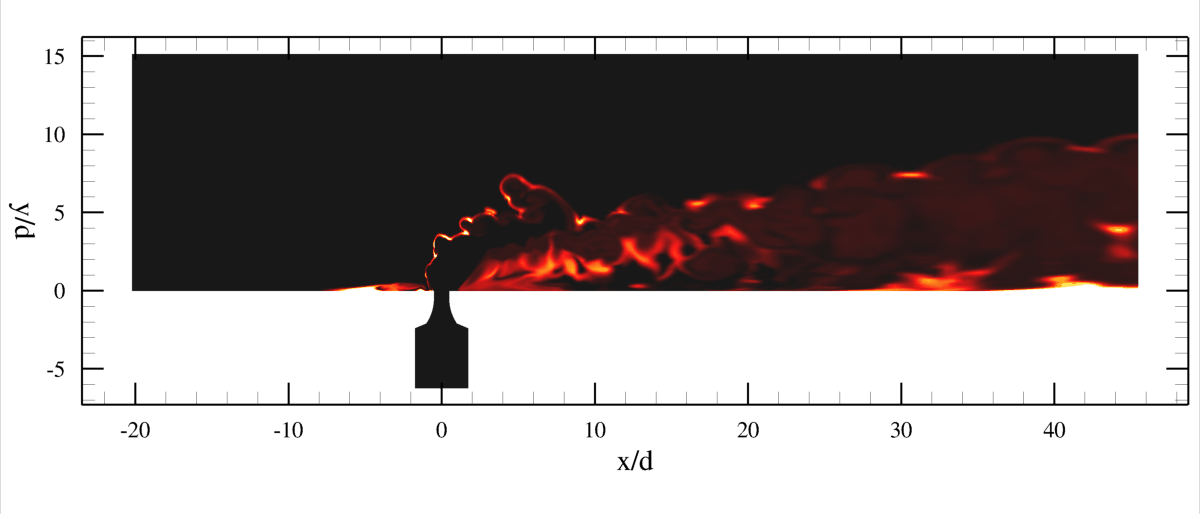 |
Fig. 1: Instantaneous contour animation of the OH mass fraction in the symmetry plane z=0 at a J=5 from a LES simulation. |
| |
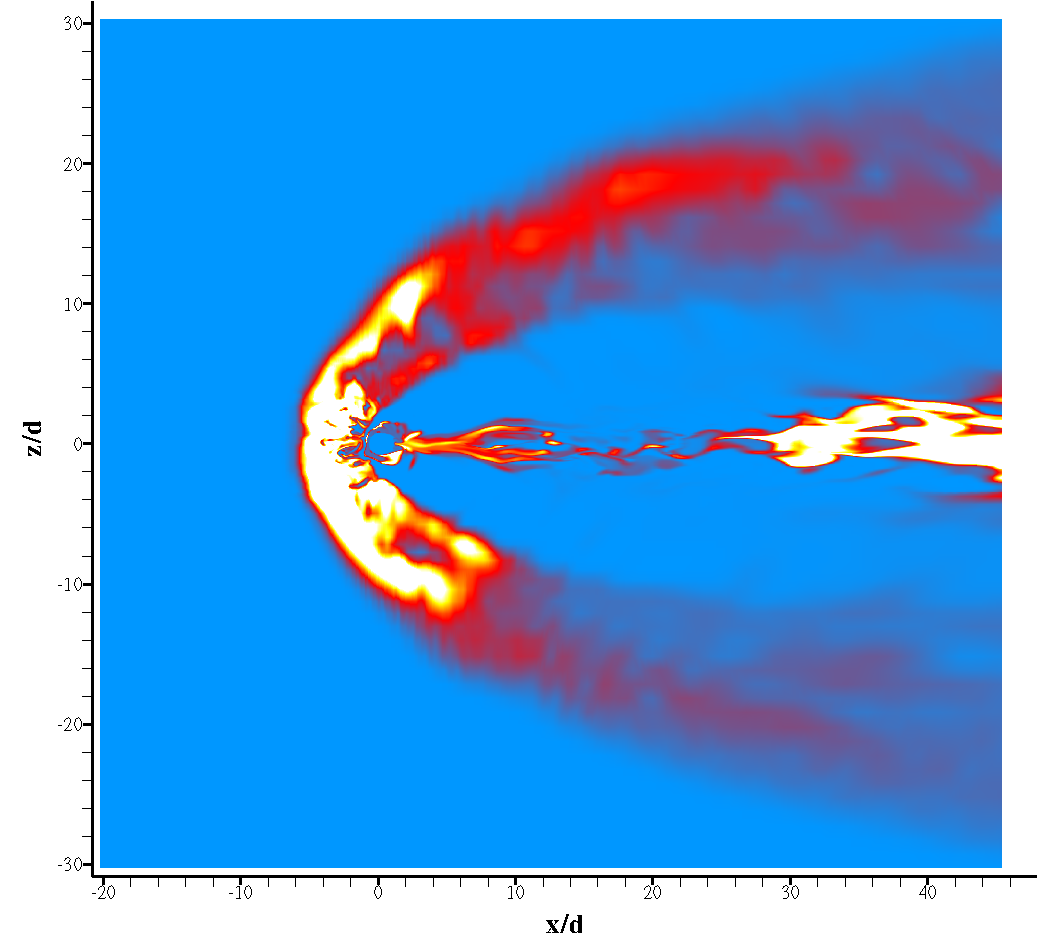 |
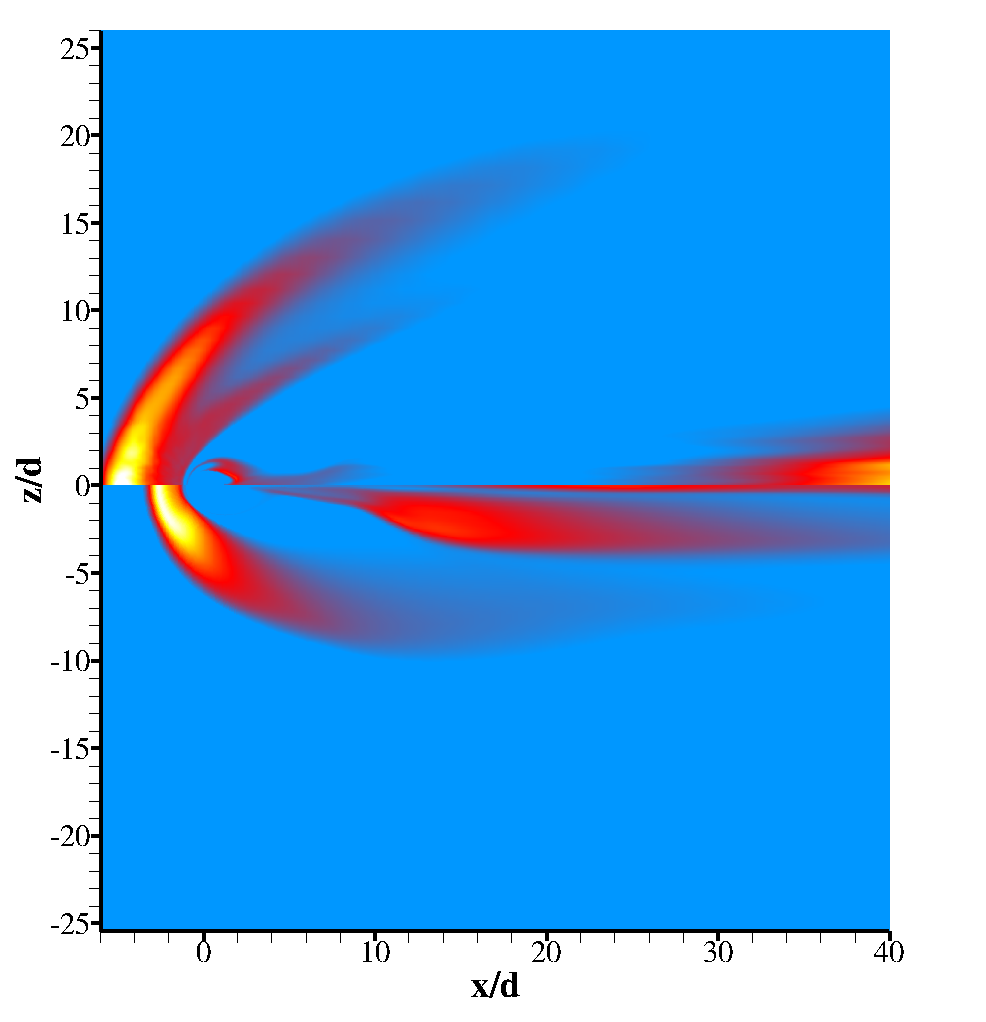 |
Fig. 2: Instantaneous contour of the OH mass fraction in a plane parallel to the plate at y=0.25d for a J=5 from a LES simulation.
|
Fig. 3: Average contour of the OH mass fraction in a plane parallel to the plate at y=0.25d for a J=5. Comparison between average LES (top) and RANS (bottom). |
|
| |
 |
 |
 |
 |
Fig. 1: Contour of the OH mass fraction in the symmetry plane z=0 at a J=5. Comparison between experiment (top), instantaneous LES (second), average LES (third) and RANS (bottom). |
| |
| |
| HyShot II |
| The unstart phenomenon is investigated in the HyShot II model scramjet with RANS simulations. Both the flight and DLR ground experimental measurements are used for validation. HyShot II was conceived with two combustors, one on each side but only one of the combustor was fueled, so that both cold and hot sides could be compared. |
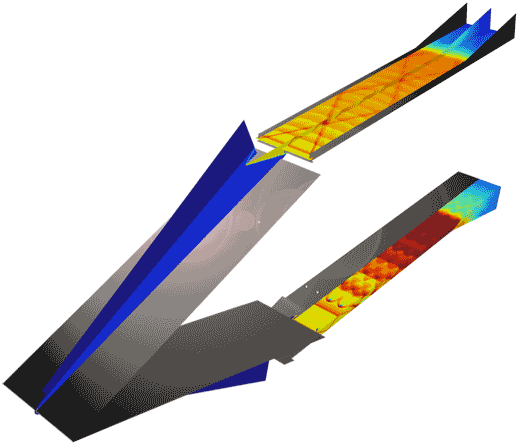 |
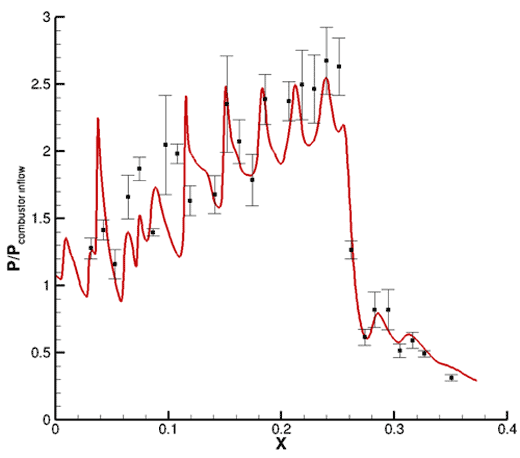 |
Fig. 1: Geometry and CFD flow visualization of the scramjet engine showing the wedge intake (front) and combustor with fuel off (top) and fuel on conditions (bottom), respectively. The contour plots show the square root of pressure.
|
Fig. 2: Pressure distribution in the fueled combustion chamber along the bottom wall between two hydrogen injectors. The pressure is normalized by the combustor inflow pressure. The injector is located at x = 0 and the symbols correspond to the measurements of the DLR ground experiment. |
|
| |
| |
|
|
Fig. 3: Contour visualization of the pressure (top left), temperature (top right), mixture fraction (bottom left) and major product H2O mass fraction (bottom right) along two symmetry planes going through and between two injectors, along the bottom wall and at different cross-planes of the fueled combustor. |
| |
| |
| People |
| |
| Name |
Email address |
Focus |
| Prof. Heinz Pitsch |
h.pitsch@stanford.edu |
Combustion modeling |
| Prof. Godfrey Mungal |
mungal@stanford.edu |
Experimental investigation of combustion and mixing |
| Prof. Ron Hanson |
rkhanson@stanford.edu |
Shock tube experiments |
| Dr. David Davidson |
dfd@stanford.edu |
Shock tube experiments, characterization of reaction rates, chemical mechanism |
| Dr. Vincent E. Terrapon |
terrapon@stanford.edu |
Combustion and mixing modeling (LES/RANS) |
| Dr. Mirko Gamba |
mirkog@stanford.edu |
Experimental investigation of combustion and mixing in JICF |
| Amirreza Saghafian |
saghafian@stanford.edu |
LES of combustion in JICF |
| Victor A. Miller |
vamiller@stanford.edu |
Experimental investigation of model scramjet combustor Acetone/toluene PLIF in expansion tube flows |
| Christopher L. Strand |
cstrand@stanford.edu |
TDL-based thermometry and velocimetry in hypersonic flows |
| Zekai Hong |
hongzk@stanford.edu |
Kinetics |
| Jon Yoo |
jhyoo@stanford.edu |
Imaging |
|
| |
| |
[an error occurred while processing this directive] Since we are interested in predictive simulations of the unstart phenomenon caused by thermal choking, the heat release model is central to our overall objectives. The heat release modeling group is focusing on the development of heat release models for supersonic combustion to be used in both low and high fidelity simulations. We are also interested in identifying and characterizing all uncertainties associated with the combustion process. The group effort relies on a close interaction between experimental and numerical work. In particular, two in-house experiments directly support the modeling effort, i.e., a mixing and combustion of a jet in supersonic cross-flow experiment and shock tube experiments to characterize the different reaction rates and their uncertainties.
Since we are interested in predictive simulations of the unstart phenomenon caused by thermal choking, the heat release model is central to our overall objectives. The heat release modeling group is focusing on the development of heat release models for supersonic combustion to be used in both low and high fidelity simulations. We are also interested in identifying and characterizing all uncertainties associated with the combustion process. The group effort relies on a close interaction between experimental and numerical work. In particular, two in-house experiments directly support the modeling effort, i.e., a mixing and combustion of a jet in supersonic cross-flow experiment and shock tube experiments to characterize the different reaction rates and their uncertainties.








